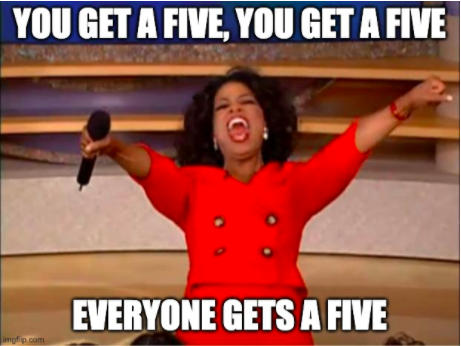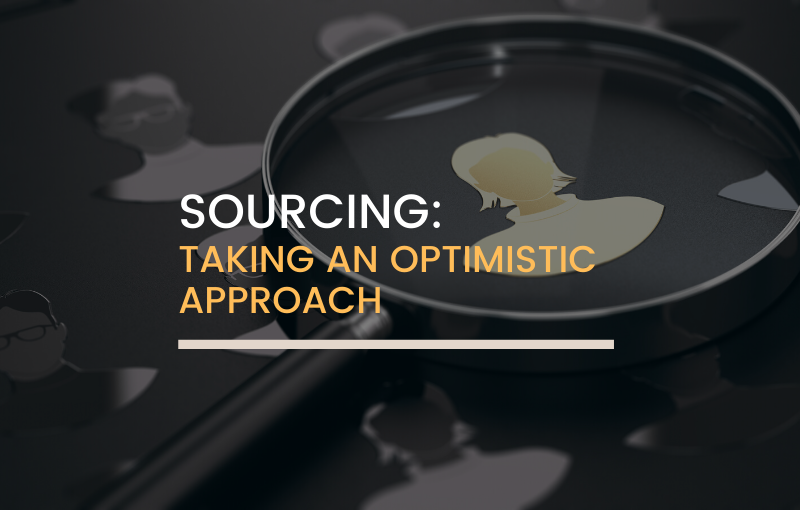I tend to be a pretty optimistic person overall. However, when it comes to sourcing, I take a pessimistic stance. Recently I realized that sometimes approaching sourcing with a more optimistic approach can actually make me a stronger and more successful sourcer.
We all know the feeling of finding the “diamond candidate.” The candidate that checks every box that the hiring manager is looking for and then some. “Oh man, they’re going to be so happy when they see this candidate!” I think as I excitedly add the candidate to my project.
I usually end up aggregating a shortlist of candidates that check off every must-have and most of the nice-to-have skills the client is looking for. Since I have a tendency to assume that these are the only candidates worth my and the hiring manager’s time. Also, I want my work to reflect that I am a strong sourcer.
However, I recently realized that this may not be the most effective method or the best use of my or my hiring manager’s time.
The Approach
When I joined Wayne Technologies, I learned a completely different approach to sourcing. Rather than glancing at each profile in my results and adding them to my project when they are a good fit. I was told we would pull every candidate that our search pulls back. We’d then add the list to a project and narrow it down from there.
This strategy offers more data for the client. We are able to show the client what search strings we used and the total amount of profiles we then started with. Then we quickly remove any candidate that we can easily eliminate based on their title, location, company, etc. The list still tends to be a couple of hundred people at this point.
From here, we take a quick glance at the candidates’ profiles and decide whether they would be worth screening. This is where I really noticed my pessimism with sourcing and had to work at retraining my thought process.
Ranking
We rank our candidates one through five (one as the highest score, and five as the lowest) based on their fit with the role and company we are working with. We consider anything one through four worth speaking to. It shocked me. Honestly. I would’ve thought that we would present ones and twos to the client and just keep the threes, fours, and fives in our back pocket.
I immediately polarized my rankings. Nearly everyone I ranked was a one, two, or five (but honestly, mostly fives).

I turned in my results, pretty proud of what I had done, to find out that I was being excessively harsh with my ratings. It became a running joke that no candidate was good enough for me and if a candidate received a five, I was probably the one who ranked them.
What it comes down to: Can they do the job?
It’s been explained to me that I had to change the way I was looking at the profiles. Don’t think, “This candidate is perfect, but this one is not.”
But rather, think “This candidate is really great, this one is good. And this person can probably do the job. Then, this candidate’s background is cool but they probably can’t do this job.”
It was not as black and white as I thought.
I took a moment to realize that not all companies tend to hire their “diamond” candidate. They may be the perfect fit on paper. But usually, there is a roadblock, such as culture fit or price. Hiring managers often think they want a 1.
But after interviewing a few candidates, end up going for the middle of the pack candidate. The candidate who is an awesome culture fit for their team and seems very trainable. Hiring managers tend to gravitate toward the candidates who we rank two to four.
The Result
I’m not going to lie. It blew my mind. I had spent several years producing lists that could have looked completely different. I didn’t want to dwell on the past. I decided it was worth my time to take more time on each profile, to take a holistic view. And try to become less strict with my rankings.
Over the course of a few weeks, I retrained the way I looked at a candidate profile. Now, I’m not producing a short list of “perfect” candidates with very little data to back my strategy. Instead, I am producing a larger and more diverse list of candidates with data to explain everything.
From the total candidate pool down to my final list of candidates that we plan on messaging. While my list is longer and has more variety of skills, I actually feel like a stronger sourcer than I had while taking a more pessimistic viewpoint while sourcing.
Conclusion
A pessimistic stance when it comes to writing search strings may make you a stronger sourcer. However, a positive stance while viewing profiles can help you deliver a more well-rounded and effective batch of candidates to a hiring manager.
It is important to remember that the “diamond candidate” is not usually the candidate that gets the job. Instead, we should present all those who can do the job.
Authors
Julia Adler
Julia "Wonder Woman" Adler Sourcer Julia Adler is currently working as a Sourcer at Wayne Technologies. She works based on clear deliverables, provide full-cycle transparent data, and are changing the way our clients view sourcing. On a day to day basis, she sources candidates, delivers talent maps and market data, finds emails, uses/has experience with a wide variety of tools, and contacts candidates with messaging built around the DISC personality profiles. Outside of Wayne Tech, Julia volunteers as the Editor of ATAP (Association of Talent Acquisition Professionals), is a Staff Writer for SourceCon, and was a Speaker at SourceCon 2020. In her free time, you can find her on a run with her pup, painting, or listening to podcasts. She has been working in recruiting/sourcing for the past four years and specializes in recruitment tooling, building boolean strings, natural language search, and raw sourcing. She believes that you are never done learning, regardless of where you are in your career.
Recruit Smarter
Weekly news and industry insights delivered straight to your inbox.





